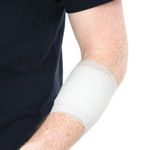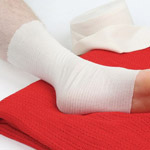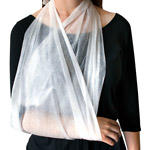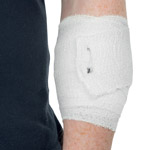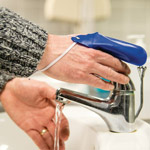-

Conforming Bandages
£9.81Supplied in: Pack of 10 -

Triangular Bandages
From £6.27 To £6.48Supplied in: Pack of 10 -
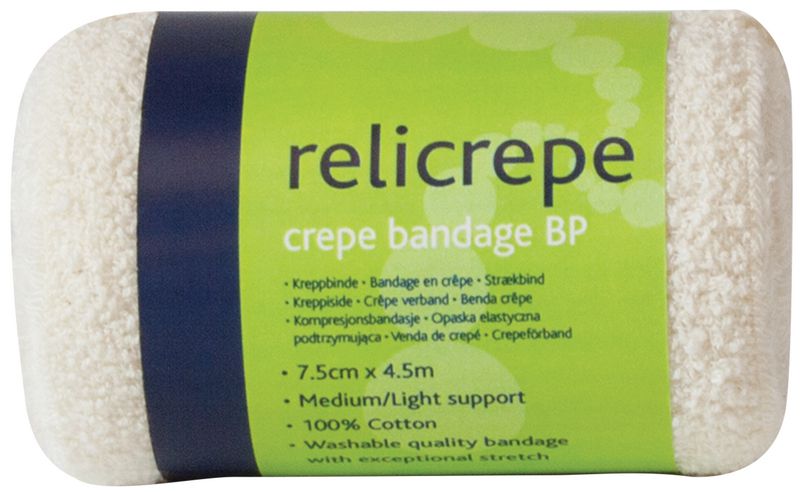
Crepe Bandages
£17.04Supplied in: Pack of 10 -

Tubular Gauze
£5.70Supplied in: Single -

Haemorrhage Control Bandages
From £11.60 To £12.58Supplied in: Single -

C-A-T® Tourniquet
£41.60Supplied in: Single -

Conforming Blue Bandages
£8.62Supplied in: Pack of 10 -

Blue Eye Patch Dressing
£5.69Supplied in: Pack of 10 -

S.T.A.T. Tourniquet
£31.62Supplied in: Single -

Tubular Bandages
From £11.72 To £15.40Supplied in: Single
Bandages
Need help?
 See our guide on choosing the correct bandage
A well-stocked first aid kit is the first step in ensuring the health and safety of a workplace, and it should include a supply of bandages. We have a wide range of first aid supplies available that includes a choice of bandage types. Whatever type of bandages you need we’re sure to have the right kind for your first aid kit, or to help keep your first aid room fully stocked. As you no doubt know, after undergoing a health and safety assessment, obtaining a first aid kit is required to ensure you are adhering to the Health and Safety Executive requirements.
See our guide on choosing the correct bandage
A well-stocked first aid kit is the first step in ensuring the health and safety of a workplace, and it should include a supply of bandages. We have a wide range of first aid supplies available that includes a choice of bandage types. Whatever type of bandages you need we’re sure to have the right kind for your first aid kit, or to help keep your first aid room fully stocked. As you no doubt know, after undergoing a health and safety assessment, obtaining a first aid kit is required to ensure you are adhering to the Health and Safety Executive requirements.
Also discover:
First Aid SuppliesMedical TapeFirst Aid PlastersWound Healing DressingsTrauma Dressings
Bandages - Everything You Need To Know
Bandages and dressings are staple items for every first aid kit - no matter where it is to be positioned or what injuries it might be equipped to tackle. With so many different varieties out there, do you know what type of bandage you need and how to apply them safely?
At Seton we supply a comprehensive collection of gauze and sterile fabric bandages. Protect the health of your team today by stocking up on these low price essentials - fuss-free delivery included.
If you are stocking up on bandages to add to a first aid kit or first aid room supplies, a good place to start would be our Assorted Bandages Value Pack. From conforming and tubular types to crepe bandages this bundle includes a wide assortment and quantity of products to ensure you are prepared for almost any situation, at home, the office or out on the road. Also included is a pack of safety pins for securing the bandages, so you save even more compared to buying each item separately.
| Assorted Bandages Value Pack | Contents |
|---|---|
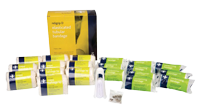 |
Conforming Bandage Pack of 101
Crepe Bandage BP Medium Pack of 101
Tubular Gauze with Applicator Pack of 251
Elasticated Tubular Bandage Medium1
Safety Pins of 121
|
The Different Types of Bandages
Whilst the term dressing and bandage is often stated interchangeably, it is important to understand that there is a key difference. In short a dressing is applied directly to the wound, whereas a bandage is commonly deployed to hold a non-adhesive dressing in place, or support a limb.
While a dressing might be self-adherent, bandages are usually adhesive free, requiring a pin or knot to hold them together.
For more information and help choosing dressing supplies, please see our Wound Dressings range.
5 Different Types of Bandage
When it comes to bandages, there are a few main types;
Roller Bandages
Supplied as a long roll of material, such as Conforming Bandages. This product is individually wrapped to keep it sterile as long as possible, while the stretchy material conforms to the body with ease, to make this comfortable to wear, particularly for extended periods of time.
For those in the food industry, why not add Conforming Blue Bandages to your medical first aid kits?
Tubular Bandages
Commonly used for fingers or toes, as well as other areas of the body where there is frequent movement; such as knees and elbows. Tubular Bandages can be washed, are easy to apply when pins or tape are not available, and offers effective support for skin and soft tissue injuries.
Triangular Bandages
Often used to support, elevate or otherwise immobilise a limb. Triangular Bandages offer a quantity of uses including as a cold compress and applying pressure to help control a bleeding injury.
Crepe Bandages
This elastic wrapping can be useful when light support or absorption is needed and is a good addition to a simple first aid kit. Made with a strong weave of BP grade cotton, crepe bandages offers strong and versatile qualities, and can be deployed to hold dressings in place or alternatively to provide support in the event of a strain or sprain injury.
Finger Stalls
Particularly useful wherever there is a greater risk to hands and fingers - such as kitchens, factories and workshops. Finger Stalls are ideal in situations where the dressings or plasters on the finger need to be kept dry and clean, so they are especially useful for anyone who needs to wash their hands regularly, such as someone working in a medical environment or that is involved in food preparation.
How To Put On Bandages
Depending on the type of dressing, there are some specific steps that need to be taken during the application process. However there are some key tips and tricks that will help you ensure you’re doing this safely and effectively.
- Always make sure the injured person is comfortable and get their consent for what you are about to do.
- Never lean across the injured person’s body. This will only add discomfort and pain for all so it is best to work from the side of the injury to avoid this.
- Ensure the affected limb(s) are supported, ideally in the same position it will be once the bandage is in place.
- Make sure you are using the correct size of bandage. Different parts of the body will require a different bandage width.
- Try to avoid covering extremities such as fingers and toes. With these covered it will be more difficult to check the person’s circulation.
- Keep the bandage taught. It should be applied firmly but not too tight. Secure it in place by folding it over and tying a knot in the end. You may also wish to use a safety pin, tape or clip designed for this purpose.
- Once the bandage is in place, check the individual’s circulation.
- To do this press on a nail or section of skin until it becomes pale. If colour does not return immediately on release, the dressing may be too tight - loosen it.
- You should check the person’s circulation approximately every 10 minutes to check for any changes, bearing in mind limbs can swell after an injury.
For more information on applying the different bandage types, take a look at the guidance issued by the NHS.
FAQ
Do Bandages Go Out Of Date?
In many cases that pack of bandages won’t have an expiry date written on the box anywhere but that doesn’t mean there isn’t a limit to their service life.
While most may not, some manufacturers do provide a date on their products, after which it would be unwise to apply the item to a cut, graze, scrape or other open injury - mainly because this may introduce an infection.
For those products that don’t have an expiration date, it is worth bearing in mind that whilst they are valid, and not technically-expired, you should be mindful that there are some risks. Mainly;
- If it is a self-adhesive product, that glue may have lost its ability to hold on.
- An absorbent dressing can lose its ability to hold liquid - not great if you are trying to dress a bleeding wound.
- Perhaps most importantly of all, is that it is highly likely the bandages will no longer be sterile and therefore poses a risk of viral, bacterial or even fungal infection if applied.
If an available expiration date has passed, or if you are unable to remember when the product was purchased; it is best to replace rather than take the health risk - infection is not worth risking when the price of new replacement supplies are so low.
Are Bandages Supposed To Be Tight?
In essence yes, the role of this item is usually to secure the dressing in place or provide support to an injured limb. As a result you won’t want this support to suddenly come loose, such as a knot working its way free, and risk the dressing coming away from the pain site prematurely.
However it is vital that it is not excessively tight. The NHS provides key steps that should be followed when applying any bandage. This guidance states that the bandage should be firm and secure but not tight.
Keep the bandage taught. It should be applied firmly but not too tight. Secure it in place by folding it over and tying a knot in the end. You may also wish to use a safety pin, tape or clip designed for this purpose.
How do I apply a bandage?
NHS.uk
Do Bandages Help Heal Faster?
As a rule, it is always advisable to cover any wound such as cuts, scrapes, grazes or even burns. There is a level of belief that suggests wounds require exposure to the air to heal most effectively - this is simply not true.
| High Infection Risk | Promotes Cell Growth | High Scarring Risk | |
|---|---|---|---|
| Uncovered Wound | |||
| Covered Wound |
For the most part, wounds heal most efficiently in a moist environment. Leaving an open wound exposed to the air risks infection from airborne dirt and debris, whilst also drying out the area, which is detrimental to cell growth.
Best practice for treating minor injuries at home is;
- Clean the area and check for anything that might be stuck in the wound
- Do not try to remove objects, seek medical advice
- Apply a protective ointment, such as petroleum jelly
- Dress the wound and cover with a bandage as appropriate
CLEAN
Clean the wound and check for any object(s) which may be stuck.
Do not attempt to remove anything - seek medical help instead.
PROTECT
Apply a protective ointment, such as petroleum jelly.
This offers a barrier against infection and aids recovery.
DRESS
Dress the wound with suitable products - such as a plaster or gauze.
Cover with a bandage to keep the dressing in place and clean.
Do Bandages Contain Latex?
Many bandages are made from gauze and similar fabric materials. However it is always advised to check the packaging and/or any supporting instructions of the individual product. Provided by the manufacturer, this information should clearly state whether the product may contain rubber-latex.
While it may be quick and easy to tell that a product such as fingercots are made from latex, other bandages - particularly those that stretch - may be less immediately obvious. Many products available on the market today will use phrases such as “latex-free”, “does not contain latex” or more recently “not made with natural rubber latex”.
Does Bandage Reduce Swelling?
Properly applied an elastic bandage, like cohesive or Crepe Bandages can help control swelling of the area surrounding an injury.
For best results, such wrapping should be secure but never overly tight. If it is excessively tight, this can not only cause a level of pain or numbness, but there may be visible signs of restricted circulation such as the skin starting to appear blue or purple.
It is important that the bandage is suitable for the injury and correctly applied. It is not recommended to use compression bandages for more than 48 hours.

